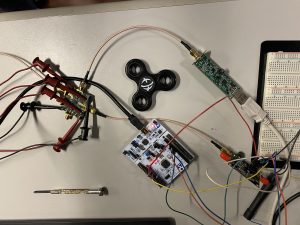Real-Time Signal Processing
In the previous weeks, we have been collecting data on one machine, a Windows surface pro, and processing it on another, a new Macbook Pro. The reason being that the driver software was not supported on mac, but we knew that our Windows computer did not have the processing power to handle our signals in real time. The data was manually transferred using a USB stick which was clearly a stopgap solution. This week Enock and I implemented a server on that processes data — transferred over UDP — from the Windows machine in real time. The addition of this server to our signal processing pipeline has greatly increased the speed at which we can capture data and debug, and it is an integral part of our final design.
Debugging Signal Capture
In attempting to correlate the data collected from two antennas, I noticed that there were some inconsistencies in our results. Sometimes, the correlations looked reasonable, and other times less so. Through extensive testing, we discovered that one of the outputs from our downconverter board was corrupted. We have a spare downconverter which performed perfectly after replacement.
Progress Since Last Week
I have made a lot of progress on the correlation code since last week. That, in addition to the UDP server, has enabled fast (<<1sec) delay calculations between the two signals.
Tasks for Next Week
I will be working with Enock and Txanton on adding two additional RTL SDRs to our system. I will also be implementing angle of arrival estimation, which is a simple equation that will be added to our code.

